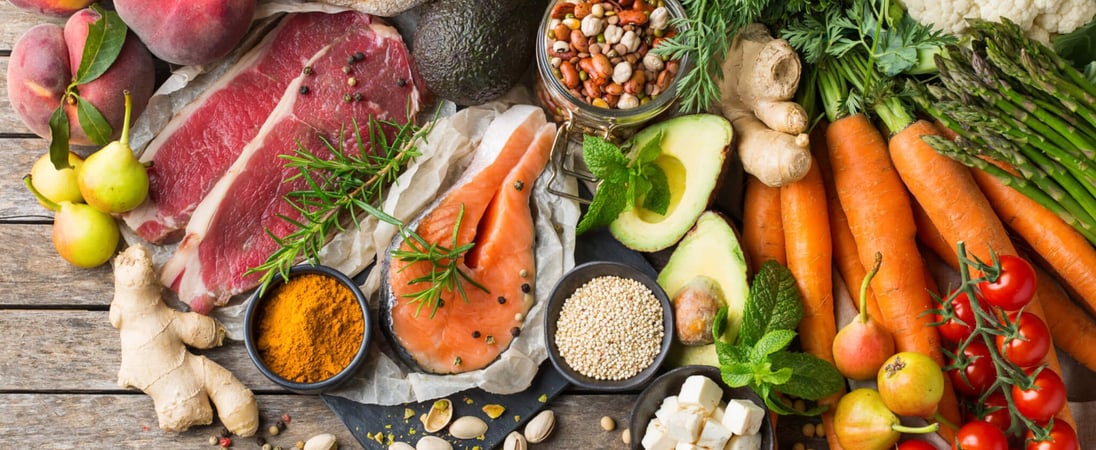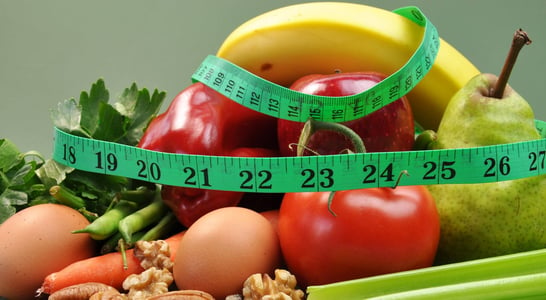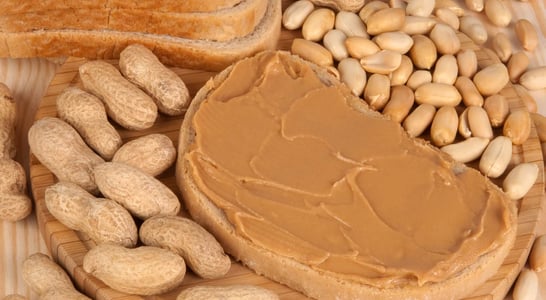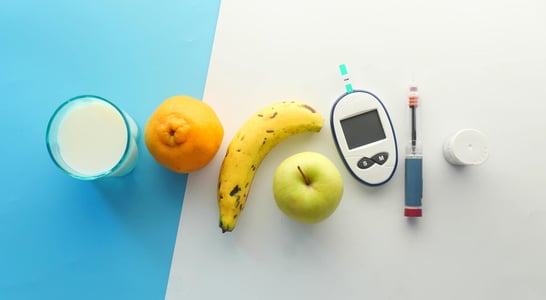
National Food Day
Eating well doesn't have to be boring or restrictive — fuel your body with nutrient-dense foods that energize and nourish you.
Getting families to pay more attention to what they are eating and then make improvements toward eating more real and whole foods is the entire essence of National Food Day!
History of National Food Day
When packaged foods and convenience foods began to grow in popularity during and after World War II, the number of people cooking meals at home from scratch seemed to hit a decline. And with women working outside the home more than ever, this seemed like a great compromise for family life.
But with the convenience came the addition of non-natural preservatives, artificial trans-fats and a lack of clear labeling. Because of this, many scientists and nutritionists were concerned that families were finding themselves uninformed and unaware about the things that they were ingesting into their bodies.
In 1971, the Center for Science in the Public Interest was founded by several scientists who were concerned for the health of families. As a consumer advocacy group that is science-based and independent of any government agency, the clear and ambitious agenda of CSPI has been to improve the food system in the United States to support healthier eating for American families.
One large goal of the CSPI was to make sustainable, healthy food available to anyone, and they have gone about advocating for this and raising awareness in a variety of ways. This includes legislation for more informed labeling, removal of certain dangerous trans-fats, advocacy for better school lunches and much more.
By 1975, the CSPI founded National Food Day in an effort to get more people involved in learning to shop, eat and cook in a healthier and more natural manner. In an attempt to offer something similar to Earth Day, National Food Day has been celebrated annually for several decades.
National Food Day is all about making an effort to eat more whole, real foods, such as fresh vegetables and fruits, whole grains and natural proteins. While it might take a bit of thinking ahead and creating some new habits, the potential for massive results is certainly worth a little bit of effort!
National Food Day Timeline
1500 BC
Yeast bread is first recorded
The earliest recorded bread made with yeast is in Ancient Egypt, though it is likely that fermentation was used in bread much earlier than this. [1]
1921
First fast food restaurant opens
White Castle, America’s first fast food chain, opens in Wichita, Kansas and serves burgers made on an assembly line.[2]
1971
Center for Science and Public Interest is founded
CSPI, the founding organization for National Food Day, is established by several scientists.[3]
1975
First National Food Day is celebrated
Founded to raise awareness about the increasing industrialization of food in America, as well as hunger, increasing food prices, as well as the diet and health crisis in the United States.[4]
2015
Food Day Apple Crunch takes place
On National Food Day this year, students are encouraged to participate by posting a picture of themselves biting into an apple, with the hashtag #FoodDay2015.[5]
How to Celebrate National Food Day
Celebrating and joining in on the fun of National Food Day can not only be a delight to enjoy, but also is a great step in creating healthier habits that can last a lifetime!
Consider implementing some of these tasty ideas in honor of the day:
Eat Some Real Food!
Sure, it’s something that most humans do on most days, but National Food Day is a particularly important day for eating – and for enjoying the food that is eaten! On this day, make a bit of an effort to get all of the meals for today from the produce section or fresh meat section, rather than eating from pre-made, preservative filled convenience food.
Got a craving for some crunchy food? Put down that bag of potato chips and, instead, pick up a crisp apple or a crunchy carrot stick. Feeling like a sweet snack? Instead of that pre-packaged granola bar, consider whipping up some homemade granola that includes oats, raisins, cinnamon, vanilla extract and honey.
When it comes to eating real food for National Food Day (and beyond), the changes can be small but the effects are important and lasting!
Learn to Shop Differently for National Food Day
Many times, simply out of habit, people tend to do the same things over and over again. For those who are accustomed to purchasing processed foods, it can feel a bit difficult to overcome that habit. But, National Food Day is a great time to try to re-think the old habits of grocery shopping.
All it takes is a bit of time to stop and reconsider the way grocery lists are made and food is purchased. One of the best ways to level up that food shopping experience is to make a plan in advance, filled with healthier, natural and fresh foods.
In most cases, an important factor for learning to grocery shop differently is to spend the most amount of time around the perimeter of the grocery store. This is because the perimeter is typically where the healthier and most natural foods are located. Fresh fruits and vegetables, dairy items, the meat counter, and freshly baked items are all often located on the outside loop. Start by filling up the cart with produce and move on around the outside from there.
On the other hand, at the center are items that may be filled with preservatives, like frozen foods, pre-packaged snacks, convenience foods and more. Although some of these are not bad, simply being aware of this can help change the way grocery shopping impacts a family’s health.
Join in on a National Food Day Event
Different events in honor of National Food Day are planned in local communities around the country. Whether this means attending a lecture on how to stock a more natural kitchen at home, or joining in on a community event that is advocating for healthier school lunches, this day is a great one for getting connected with others who are making similar efforts!
Try Some New Healthy Recipes
Just because it is healthy doesn’t mean it can’t be quick and convenient! It’s all about learning to think a little differently about the way food is shopped for and prepared.
For instance, when the kids come home from school and want a snack, it’s easy to grab a bag of potato chips or a package of cookies. But what if they had some pre-cut carrots to dip into peanut butter instead? It’s just as delicious and tons more nutritious.
Or, instead of cooking up that box of prepared mac and cheese or a package of ramen noodles, try some Asian stir fry made from frozen, pre-sliced veggies. It’s just as easy and much tastier and healthier.
Longing for proteins that are more convenient? Try grabbing a rotisserie chicken from the deli section of the grocery store. It’s quick and easy, but also healthier than grabbing hamburgers at a fast food joint. Simply add some sliced cucumbers or home baked sweet potato fries as a side.
Even with a small effort, and simply paying attention, National Food Day has the potential to improve the diets and the health of Americans as well as people all over the world!
National Food Day FAQs
How is food important to culture?
Food provides cultures and individuals with identity, comfort, status, pleasure and belonging and, for some, it is more important than geography or even language.[1]
How long can you go without food?
A person could possibly survive up to two months without eating food, although this would cause some serious health problems.[2]
Does food give you energy?
Yes, all food gives energy to the body, but the type of energy can range from a quick jolt with refined sugars to more sustained energy with whole grains or veggies.[3]
How long does it take to digest food?
It typically takes 6-8 hours to digest food from eating to its arrival in the small intestine. From here, it is another 36 hours or so until the food moves through the entire colon.[4]
Can food poisoning cause a fever?
Yes, food poisoning can be accompanied by a fever, nausea, stomach cramps, vomiting and diarrhea.[5]
Also on ...
View all holidaysGlobal Champagne Day
Bubbly, often used for celebrations, with a touch of elegance and effervescence, it's the classic way to toast to good times.
World Kangaroo Day
Supporting marsupials in their natural habitat contributes to biodiversity, conservation efforts, and preserving Australia's unique wildlife.
National Bologna Day
That deli classic, with an unforgettable taste and a hint of nostalgia, perfect between slices of fresh bread.
We think you may also like...
International No Diet Day
Drop your rules and restrictions around eating and join a movement of no-shaming body positivity and health-focused education on International No Diet day.
Top 8 Challenge Day
Milk, eggs, wheat, fish, peanuts, tree nuts, soy, and shellfish: remove these Top 8 allergens from your diet and see if your overall well-being improves.








